- Details
- Written by: admin
- Category: terms
- Hits: 1255
Earthen construction includes a variety of techniques where entire buildings or their components are built from earth, with or without additives or reinforcement. Earthen construction does not include adobe which is considered to be masonry. The following types of earthen construction are included in the GEM Building Taxonomy:
- Details
- Written by: admin
- Category: terms
- Hits: 2095
A building used for any agricultural process. This includes sorting of produce, milking of cows, abattoirs.
- Details
- Written by: admin
- Category: terms
- Hits: 882
Earthen construction, without any reinforcement. This includes rammed earth construction, cob, etc., but it doesn't include adobe construction, which is considered as a masonry construction practice.
- Details
- Written by: admin
- Category: terms
- Hits: 2377
Insufficient or no seismic separation gap between buildings thus allowing them to pound and damage each other. A building can have pounding potential if the gap between buildings is less than 4% of the height (h) of the lower building, e.g. less than 400 mm for h = 10 m.
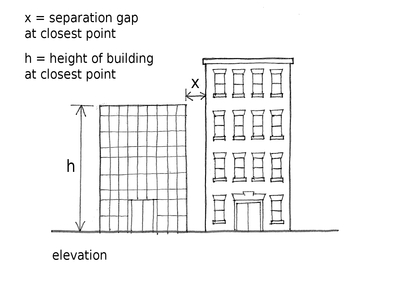
If x is less than 4% of h, the buildings can have pounding potential.

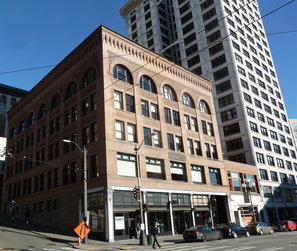
Many adjacent buildings in urban centres without a separation gap have pounding potential, Seattle, USA (S. Brzev)
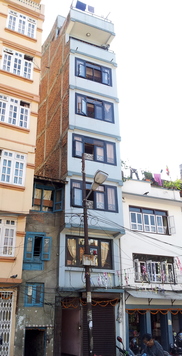
Adjacent buildings of different height, pounding potential, Kathmandu, Nepal (K. Porter)
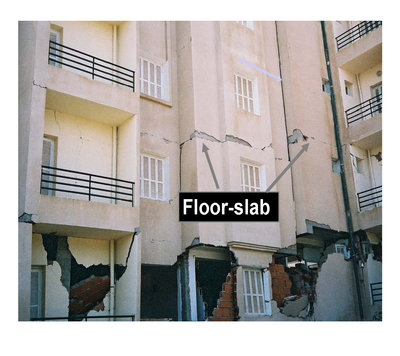
Two adjacent reinforced concrete buildings on a sloped ground suffered a major damage in the 2003 Boumerdes, Algeria earthquake; the buildings had an inadequate seismic gap, and the pounding effect was significant due to floor slabs at different elevations (S. Brzev)
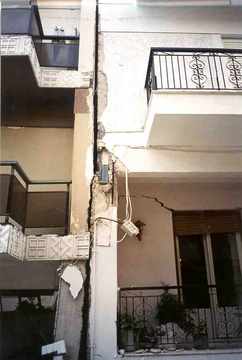
Damage due to pounding in reinforced concrete buildings with floors at different elevations in the 1999 Athens earthquake (A. Pomonis)
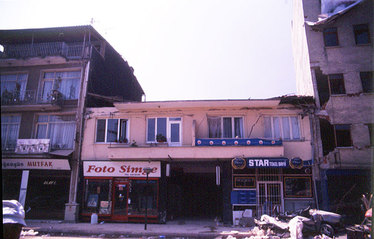
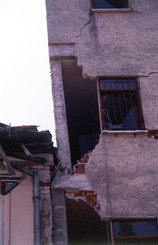
Pounding damage in adjacent buildings of different heights affected by the 1999 Turkey earthquakes (Gulat, Ascheim, and Spence, World Housing Encyclopedia Report 64)
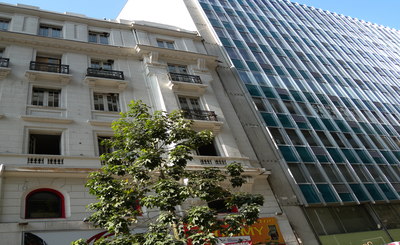

Pounding damage in Santiago due to the 2010 Chile earthquake (S. Brzev)


Damage to an unreinforced masonry building in Santiago due to the pounding effect in the 2010 Chile earthquake (S. Brzev)

Pounding damage due to the 2010 Chile earthquake (S. Brzev)
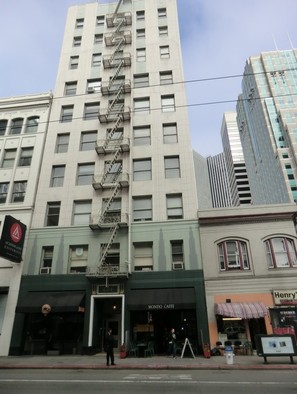
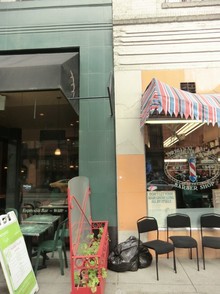
Adjacent buildings without seismic gap, pounding potential, San Francisco, USA (C. Scawthorn)


Adjacent buildings of different height without seismic gap, pounding potential, San Francisco, USA (C. Scawthorn)
- Details
- Written by: admin
- Category: terms
- Hits: 3285
The structure incorporates ductile design, where steel members or reinforcing are designed to undergo plastic deformation in over-load situations before failure under earthquake loads occurs in structural members or their connections. Provision of ductility is achieved by both providing a hierarchy of member strengths in a structural system (known as Capacity Design Approach) as well as special member detailing. For example, ductile moment frames will have columns stronger than the beams and shear force detailing will prevent shear failures of both beams and columns occurring before flexural yielding.

The main objective of the Capacity Design Approach is to ensure that buildings perform in a ductile manner, that is, to avoid brittle failure and collapse in earthquakes. The designer needs to select structural components in which extensive deformation and damage may be expected, while the remaining portion of the structure must remain strong enough, or flexible enough, to sustain these forces and deformations. This is can be explained on an example of a chain, where ductile links represent locations at which significant plastic deformations are expected (ductile links), while brittle links represent other structural components. For example, in a reinforced concrete frame extensive deformations are expected in the beams (analogous to ductile links), while columns need to remain strong (analogous to brittle links) (illustration by C.V.R. Murty, Earthquake Tip 9, NICEE, India)

One of the design requirements for ductile performance of reinforced concrete moment frames is to ensure Strong Column-Weak Beam design concept - beams must be the weakest links (C.V.R. Murty, Earthquake Tip 9, NICEE, India)

Plastic hinges (shown in red colour) are locations in a reinforced concrete or steel moment frame system where significant deformations and damage are expected to take place during a major earthquake (FEMA 451B, 2006)
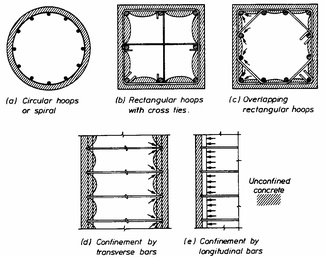

Special reinforcement detailing provisions are critical for ductile performance of reinforced concrete moment frame systems. Confinement is supplied by closely spaced reinforcement, usually in the form of hoops or ties. Reinforced concrete frames with adequately confined columns performed well in past earthquakes (illustrations: FEMA 451B)
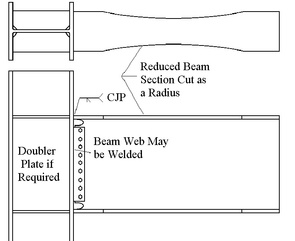

Ductile behaviour of steel moment frame structures can be achieved using Reduced Beam Section (also known as dogbone connection). The dogbone connection consists of trimming a portion of the steel beam flange in the region adjacent to the beam-to-column connection; this type of connection acts as a ductile fuse, and it forces yielding to occur within the reduced section of the beam; see an I-shaped beam with dogbone connection ready for the construction, Canada (drawing: FEMA 355D, photo: S. Brzev)

Reinforced concrete and reinforced masonry walls with proper reinforcement amount and detailing are expected to show ductile seismic performance (FEMA 306, 1999)


